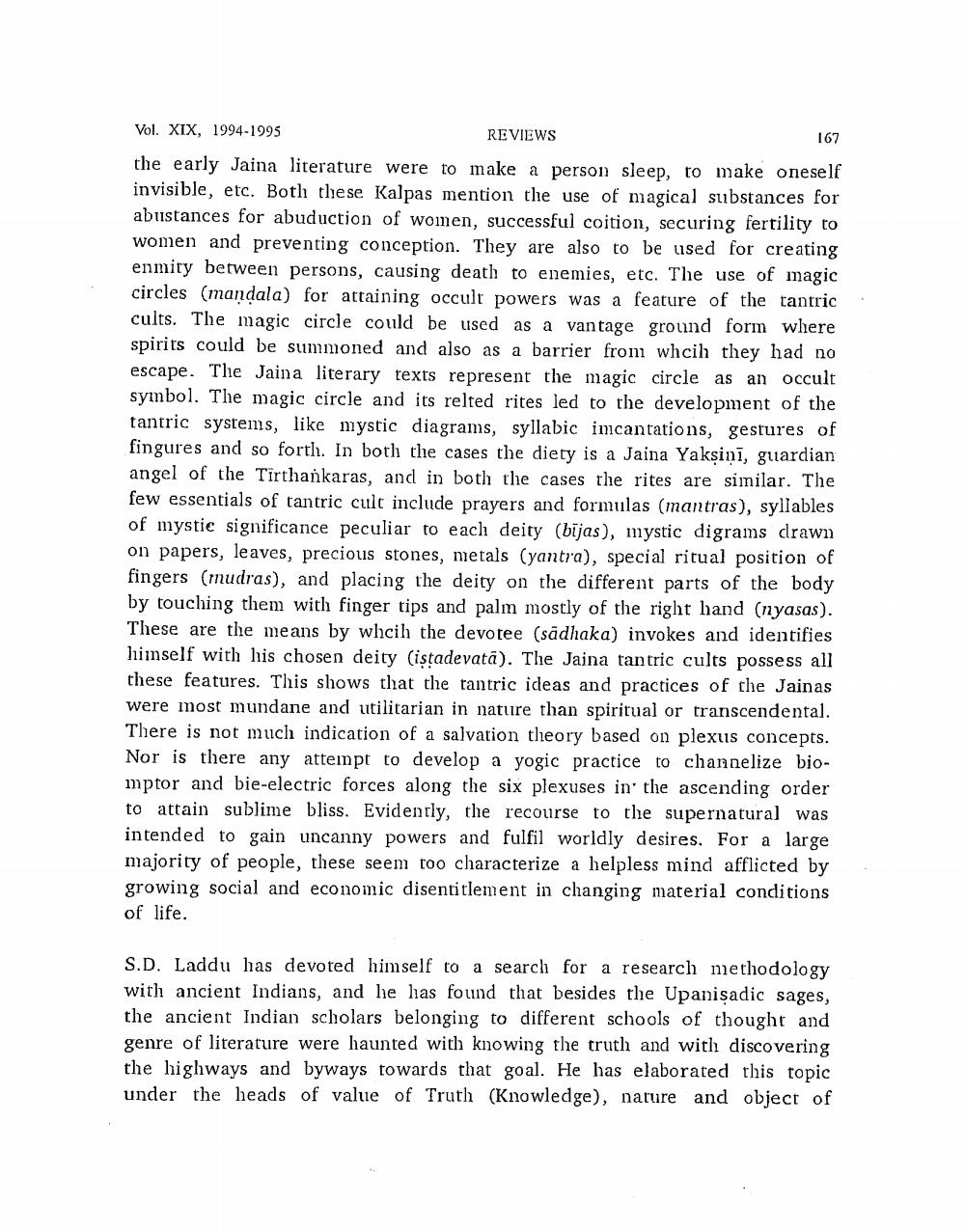________________
Vol. XIX, 1994-1995
REVIEWS
167 the early Jaina literature were to make a person sleep, to make oneself invisible, etc. Both these Kalpas mention the use of magical substances for abustances for abuduction of women, successful coition, securing fertility to women and preventing conception. They are also to be used for creating enmity between persons, causing death to enemies, etc. The use of magic circles (mandala) for attaining occult powers was a feature of the tantric cults. The magic circle could be used as a vantage ground form where spirits could be summoned and also as a barrier from whcih they had no escape. The Jaina literary texts represent the magic circle as an occult symbol. The magic circle and its relted rites led to the development of the tantric systems, like mystic diagrams, syllabic incantations, gestures of fingures and so forth. In both the cases the diety is a Jaina Yakșinī, guardian angel of the Tirthankaras, and in both the cases the rites are similar. The few essentials of tantric cult include prayers and formulas (mantras), syllables of mystic significance peculiar to each deity (bijas), mystic digrams drawn on papers, leaves, precious stones, metals (yantra), special ritual position of fingers (mudras), and placing the deity on the different parts of the body by touching them with finger tips and palm mostly of the right hand (nyasas). These are the means by whicih the devotee (sādhaka) invokes and identifies himself with his chosen deity (istadevatā). The Jaina tantric cults possess all these features. This shows that the rantric ideas and practices of the Jainas were most mundane and utilitarian in nature than spiritual or transcendental. There is not much indication of a salvation theory based on plexus concepts. Nor is there any attempt to develop a yogic practice to channelize biomptor and bie-electric forces along the six plexuses in the ascending order to attain sublime bliss. Evidently, the recourse to the supernatural was intended to gain uncanny powers and fulfil worldly desires. For a large majority of people, these seem too characterize a helpless mind afflicted by growing social and economic disentitlement in changing material conditions of life.
S.D. Laddu has devoted himself to a search for a research methodology with ancient Indians, and he has found that besides the Upanişadic sages, the ancient Indian scholars belonging to different schools of thought and genre of literature were haunted with knowing the truth and with discovering the highways and byways towards that goal. He has elaborated this topic under the heads of value of Truth (Knowledge), nature and object of




